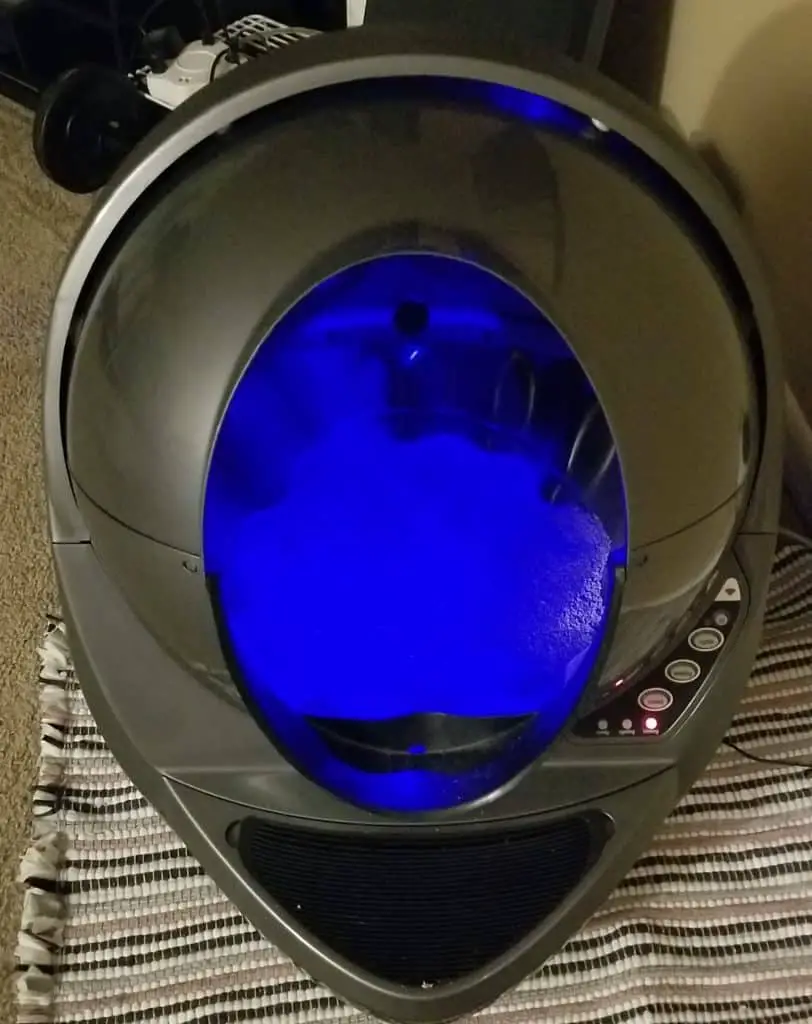More Meows is an Amazon Associate. As an Amazon Associate we earn from qualifying purchases. We may also earn commissions if you purchase products from other retailers after clicking on a link from our site.
Although animal lovers’ urge to assist stray cats is admirable, it often comes with the daunting fear of contracting various parasites, illnesses, or diseases. The thought of rabies can strike fear in anyone, even though human cases are rare. So, do stray cats carry rabies?
Most stray cats do not carry rabies. It is possible for strays to carry this disease. Thus, it is important not to aggravate stray cats and not make contact if they appear to be ill. Rabies is a dangerous disease that can harm humans.
Rabies is the deadliest disease that can be contracted via an animal. Thankfully, there is plenty that humans can do to avoid the transmission of the virus altogether – prevention is better than cure! Stick around to find out the basics of cats with rabies, as well as how you can protect yourself from contracting this dreaded disease.
Pro-Tip: If you are thinking of buying a cat or are a cat owner already, then you should be aware that taking care of the litter box can be a real chore. In this age of smart products, an automatic litter box has been created that actually makes life easier with taking care of the litter box. If you want to make your life much easier with a litter box that means you’ll never have to scoop litter again, check out the best automatic litter box on the market (in my opinion) on Amazon.
Do Stray Cats Carry Rabies?

Although there is certainly a much higher risk for a stray cat contracting rabies than a domesticated cat, this does not necessarily mean that all stray cats have rabies. Stray cats are more prone than domestic cats to parasites and minor health risks like worms, fleas, or ticks that are frequently carried around on birds, in the dirt, or on mice.
Since they live outdoors without appropriate shelter from the elements and other harmful factors, they are left to fend for themselves regarding protection, food, water, warmth, and any other aspect of living that a cat would need.
How Do Cats Get Rabies?
Because strays are exposed to being attacked by other animals that may have the virus, including other strays and wildlife like bats, raccoons, foxes, and skunks, they have a higher risk of being infected.
The rabies virus lives in the saliva of the infected animal. This can be passed on to the cat if they are bitten, where it would move directly into the bloodstream of the animal and begin spreading within the new host organism.
Check out more about stray cats and diseases in my article about if stray cats can carry diseases: Click Here.
What Percent of Stray Cats Have Rabies?
Unlike many believe, cats with rabies are possible but fairly unlikely because they commonly run from threats before they get attacked by wildlife. Their instincts guide them to survive outdoors, and they are adept at escaping hazards. In the United States, only around 7.6% of domestic animals were reported to have rabies in 2015, and wildlife accounted for 92.4% of rabies cases.
The percentage of community cats would be relatively similar based on their health and instincts. The specifics would vary based on the wildlife and community of strays or feral animals in your location. Many communities have catch, neuter, vaccinate, and release programs to protect the community as a whole.
How Can You Tell if a Stray Cat Has Rabies?
There are various stages of rabies, which worsen over time. This includes fever, malaise, lower appetites, vomiting, disorientation, pain at the wound, or numbness. However, cats in early stages without symptoms may still transmit the virus to others.
If you have a cat of your own and want to give your cat some outside time, consider investing in a Catio to keep your cat safe. This Catio (large cat house) on Amazon (affiliate link) is fantastic because it is big but still enclosed for safety: Check Out This Catio On Amazon Here.
How Long Can A Cat with Rabies Live?
The rabies virus may move slowly and take anywhere from 3 to 12 weeks to travel to the brain, where the animal will not show symptoms. After it has reached the brain, symptoms typically take 3 to 5 days to begin showing up, after which the virus would have already done severe damage to the host’s brain and nervous system.
Sadly, once the cat begins to display rabies symptoms, they typically live up to a week before a fatality occurs.

Can Cats Recover from Rabies?
If left untreated, rabies is 100% fatal in animals. If the cat has been vaccinated, it may survive with adequate medical assistance and care. But, if they have not received the vaccine, there is a strong possibility that they may not survive, as the vaccine is only useful for cats when given beforehand and even more so when they have received it multiple times throughout their life.
In addition to rabies, cats will also suffer if they drink antifreeze. To learn more about if stray cats will drink antifreeze: Click Here.
Can You Get Rabies from a Stray Cat Bite?
If the cat has rabies, then it is certainly likely to be passed on through a bite. Since the rabies virus lives in the host’s saliva, this is the easiest way for the virus to be passed on. If you are bitten by a cat that you suspect has rabies, do yourself a favor and seek medical attention ASAP.
What to Do if a Cat with Rabies Bites You
If a cat bites you with rabies, you need to seek medical attention immediately. Sadly, there is little one could do without any medical assistance if they are infected with rabies. Although there have been a few cases of humans recovering on their own, this is extremely rare.
For some people, the fatality rate is quite imminent, while in other cases, the rabies virus may even become dormant for up to years, only to attack your body at a later stage. Some vaccines may be effective if administered soon after exposure.
How Can You Prevent a Rabies in Humans?
Thus, prevention is far better than cure. Thankfully, some vaccines can assist our protection from rabies, and the fatality rate is far more prominent for those who have not received such vaccines.
Always be sure to stay up to date with rabies vaccines, particularly if there are many stray cats in your area or you are responsible for a doorstep colony. Remember that vaccines need to be repeated over time.
In terms of handling stray cats, never approach them while they are feeding, as they will naturally become defensive and aggressive and may end up biting or scratching you as a result.
Always use a long object to nudge them gently if needed, and use heavy-duty gloves with all skin covered if you need to place your hands on them.
What to Do if a Cat Bites and Scratches You
If a cat who has been infected with rabies scratches or bites you – or both – this requires immediate medical attention, whether or not you have had vaccines. Immediately after the event has occurred, you should wash the injury with a safe cleaning agent and water. Try to squeeze the fluids in that area out and apply pressure to stop the bleeding. Use antiseptic to clean to wound.
Cover the wound with a sterile dressing, but do not use any tape or bandages to block any germs. This poses the risk of trapping harmful bacteria under the skin, which will scab over and rot inside the wound.
Watch for signs of infection, including redness, drainage from the injury, swelling, pain, or fever. Seek medical assistance to determine follow-up steps or whether certain medications will be necessary. Incubation periods will be necessary if you have contracted rabies.
In addition to yourself, you may also wonder how to keep your own cat safe if you are looking to go on a walk. To do this, I recommend using a quality pet stroller like this one on Amazon (affiliate link): Check Out This Great Pet Stroller On Amazon.
Do Cats Have Rabies in Their Claws?
Yes, it is possible for cats who have the virus to carry it on their claws, although it’s somewhat less likely to be transmitted as opposed to being bitten.
The chance of the stray cat carrying it on its claws comes down to the fact that cats clean themselves and lick their claws as well. Since the virus lives in saliva, it may be carried on other areas of the body and live on claws at the time of a scratch.
Can a Small Scratch Cause Rabies?
While it is not as common to contract the rabies virus from a tiny scratch, it is still possible. Thus, the same measures should be taken regardless of how small the scratch is. It’s also important to still see a doctor, as rabies is not the only health risk of a cat scratch.
The best thing to do is always dress to cover all skin when around cats and take preventative measures against getting scratched, especially when handling stray cats or kittens.
Diseases Stray Cats Can Carry
Although most common health conditions are more transmissible between animals, such as the cold and eye infections, there are plenty of other diseases, parasites, and illnesses that humans can get from cats.
These often live in cat feces as well, where the bacteria may develop over time. Immaculate hygiene and knowledge of transmission probabilities are essential for staying healthy and germ-free.
Speaking of cat feces, make sure you check out my article on if stray cats bury their poop: Click Here.
The below table is a subset of cat diseases. All these diseases should be treated with medical attention as soon as possible. These diseases can lead to far more severe effects if left untreated.
| Name of Transmissible Disease | Type of Transmissible Disease |
| Salmonellosis | Bacterial Disease |
| Toxoplasmosis | Parasitic Disease |
| Rabies | Viral Disease |
| Ringworm | Fungal Disease |
| Tapeworm | Parasitic Disease |
| Roundworm | Parasitic Disease |
| Hookworm | Parasitic Disease |
| Q Fever | Bacterial Disease |
| Campylobacteriosis | Bacterial Disease |
| Cat Scratch Disease | Bacterial Disease |
Conclusion
As with all viruses, there will certainly be a challenge in the healing process; thus, being prepared beforehand is the best way to combat the rabies virus. Always ensure you have been vaccinated and that you take preventative measures appropriately with strays and wildlife to safeguard your health.
Consult professionals for further guidance on rabies, and always seek medical attention immediately if you suspect you have been infected.
If you enjoyed this article, make sure you check out a couple of our other articles:
- Do Stray Cats Get Attached To One Person? Simple Truth: Click Here.
- Can Stray Cats Be Affectionate? Best Reason Why: Click Here.
Here are some of my favorite cat products
In addition to checking out some other More Meows articles, I hope you’ll check out some of my favorite cat products as well. These are affiliate links, so if you end up using them, I’ll get a commission at no extra cost to you. These are the products I really do find most helpful.
Litter Box: I started out with normal, traditional litter boxes for my cat. Then, I tried this automatic litter box on Amazon (affiliate link), which helped reduce the litter upkeep. Finally, I am now a believer in the Litter-Robot 3 Connect on Amazon (affiliate link). This robotic litter box is not for everyone based on the price tag, but for me the benefits (very little upkeep, works efficiently, clean, mobile app) far outweighed the cost.

Cat Tree: I have purchased a couple of this Amazon Basics Cat Tree on Amazon (affiliate link). My cat spends a lot of time on and around this cat tree, which I position near my sofa. She uses the scratching posts on this cat tree multiple times a day, which means she is not scratching the sofa instead.
Cat Water Fountain: I love this cat water fountain on Amazon (affiliate link). There are three main benefits to having a water fountain like this for your cat. The first benefit is that it keeps water running so that your cat doesn’t need to drink still water. The second benefit is that it filters the water. The third benefit is that it will keep your cat hydrated!
